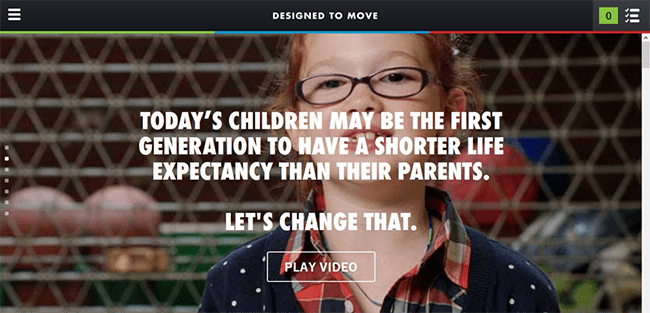
Copywriting is part of a bigger strategy aimed at selling something in exchange for money, for time, for support and so on. We know that appealing to emotions such as sadness, happiness and frustration works, but we’re grinding this method into a rut.
The world’s great fiction writers invite us on a stroll through an emotional garden, using a complex map of ideas, which over time is gradually folded back onto itself into some sort of resolution. Great stories will introduce conflict and danger, tempered with moments of love and happiness.
It’s the ups and downs of a story that get us. It’s the story’s ability to press on some common nerve we all share: love is good, ghosts are scary and so on.

Sure, novelists have tens of thousands of words to bring us to the resolution of their ideas, but that doesn’t mean we can’t learn from their methods.
Here we are going to explore how great stories are structured, and then how to apply that structure to your copywriting.
Breaking rules in writing is encouraged, by the way, so feel free to read this post and then disregard everything completely. In fact, drop a comment below about how you structure your writing — maybe we’ll learn something.
How stories are structured
I’m not the first person by a long pitch to outline the common structure of stories — people have been doing it since forever. Kurt Vonnegut, author of Breakfast of Champions (1973), Slaughterhouse-Five (1969) and other books and short stories, describes stories as curves:
Somebody gets into trouble, gets out of it again. People love that story, never get tired of it.
That, and a few other variations, is the foundation of lots of stories, but we can break it down even further. Think of any famous great story — Moby Dick, Nineteen Eighty-Four, The Green Mile — and see whether you can pick out the following four structural elements:
- A larger scale problem: This is the overarching problem affecting the world in which the story’s characters exist. In Nineteen Eighty-Four, the larger scale problem is a society in which people are cripplingly oppressed. It’s usually a problem, because problems offer more opportunities for conflict and transformation.
- A conflicted protagonist: Stories are about conflict, and about attempts by the characters in them to resolve said conflicts. Vonnegut said, “Be a sadist. No matter how sweet and innocent your leading characters, make awful things happen to them, in order that the reader may see what they are made of.”
- A threat(s): As readers, we feed on drama. We don’t like when the protagonist is faced with a threat, but we crave it all the same. The threat is ever-present, always clawing at the protagonist. Even in fairy tales, the princess is often threatened by a wicked witch.
- A transformation: From conflict comes transformation, the other thing we crave from stories. Transformation comes after the character has been raised up, knocked down, ground into the dirt and then raised again.
Treating your copy like a story
You can take the four elements of a fictional story and use them to figure out how to present your message. Think of it as building a jigsaw puzzle, then picking the piece which best represents the whole picture.
Here is what you should consider, if your intention is to make your copywriting representative of a larger story:
Is your campaign related to a large-scale problem, idea or state of being?
In other words, what’s the context? What’s going on in the world?
Does your campaign have a subject the audience can root for?
That can be a character, or you can use the reader as the subject — put them in conflict.
What’s the threat?
What’s the thing that’s going to get the reader’s blood pumping?
Where does the transformation happen?
This could be where your actual copy lives. Everything else is a set-up for the transformation.
Here are are a few examples to show the storytelling approach in action.

Designed to Move’s landing page uses some pretty standard techniques for stirring your emotions, but it’s for a good cause. The message conforms to some of the structural elements we’ve mentioned, which make stories so appealing.
We have protagonists (the children) and we have threats (obesity, disease, etc.) The problem is this idea that children today might die before their parents do. The transformation, then, is up to the reader. Specifically, it’s up to the reader to click on Designed to Move’s call to action in order to trigger the transformation.

How about this example from Klout? Here, we’re thrust into the story as the protagonists. There’s no doubt — this landing page wants the reader to examine their life and what they’re doing with it.
What’s the larger scale problem? Well, it’s not a problem per se. Rather, Klout eludes to the idea that you’re not being recognized for the things that make you tick… that you’re not living your best life. Think about that for a second, and now examine the feeling you have… that’s the threat. And it’s enough to make you want to sign up, to transform. By reading Klout’s message, you’re pulled into your own story, and only you can resolve it.
Nailing that one-liner
Before you set off to pen a landing page worthy of a Pulitzer, here’s a little more inspiration for that first line.
“Lolita, light of my life, fire of my loins.” – Vladimir Nabokov, Lolita (1955)
Powerful because: We learn something about the narrator, something about the object of the narrator’s affection and about the tone and content of the story. For those who haven’t read Lolita, let’s say that while the protagonist is conflicted, he’s certainly not conventional, or even appropriate. In spite of the controversy, there’s a world to be imagined from this opener, and it’s fewer than 10 words long.
“It was a bright cold day in April, and the clocks were striking thirteen.” – George Orwell, Nineteen Eight-Four (1949)
Powerful because: The scene is set, and something is awry — clocks don’t strike thirteen. Orwell’s opening line goes one of two ways: we imagine a world where things have changed for the better, or one where things have gone horribly wrong.
“As Gregor Samsa awoke one morning from uneasy dreams he found himself transformed in his bed into a gigantic insect.” – Franz Kafka, Metamorphosis (1915)
Powerful because: It’s menacing, it’s right to the point and it’s so completely off the wall, that we’d be bonkers not to read on. Vonnegut said, “To hell with suspense. Readers should have such complete understanding of what is going on, where and why, that they could finish the story themselves, should cockroaches eat the last few pages.” Rather fitting. Remember this when you write your own copy.
“All this happened, more or less.” – Kurt Vonnegut, Slaughterhouse-Five (1969)
Powerful because: It’s a classic opener, promising epic tales of misadventure, but with a sardonic twist which suggests a keen eye might be needed. It has some classic storytelling elements, too, namely that we might be dealing with a narrator who’s experienced great trauma or adventure.
“Vaughan died yesterday in his last car-crash.” – J. G. Ballard, Crash (1973)
Powerful because: Who’s Vaughan? Why has he been in more than one car crash? Why does it matter? There are no car crashes without drama, and we’re bound to be introduced to some pretty traumatized characters later on.
The best one-liners present a curiosity to fret over, or a character to wonder about. The best one-liners hint at a widespread problem and prompt the reader to think about a possible transformation. The best one-liners, like the best stories and the best copy, are invitations.
If you can invite your reader into a world of stories and conflicts and transformations with your copywriting, then you will have created something commercial, with a truly fictional heart. And that, is a story worth telling.
![[ebook] copywriting inspired by fiction (image)](https://unbounce.com/photos/ebook-fiction-copywriting-image-CTA.png)
